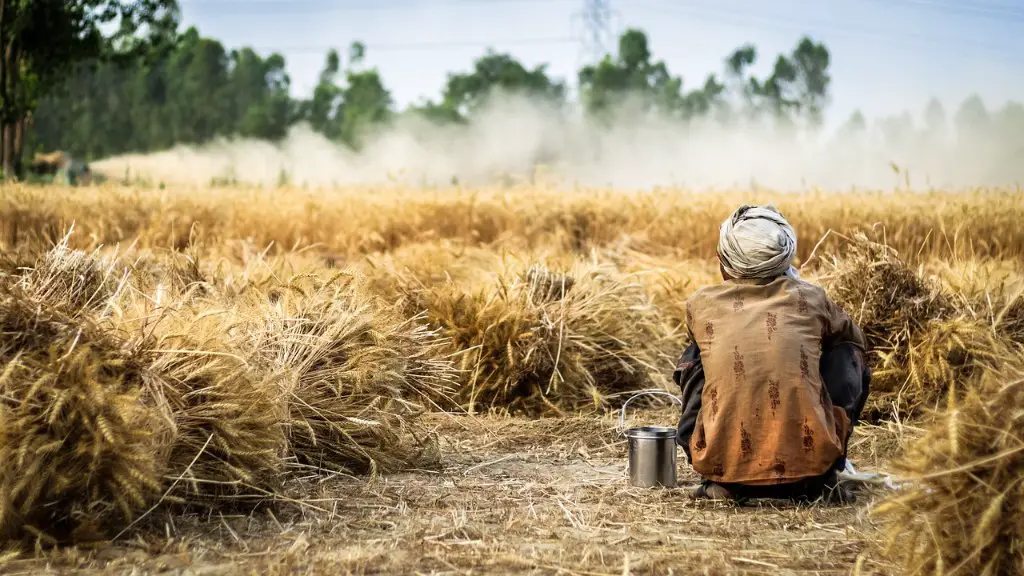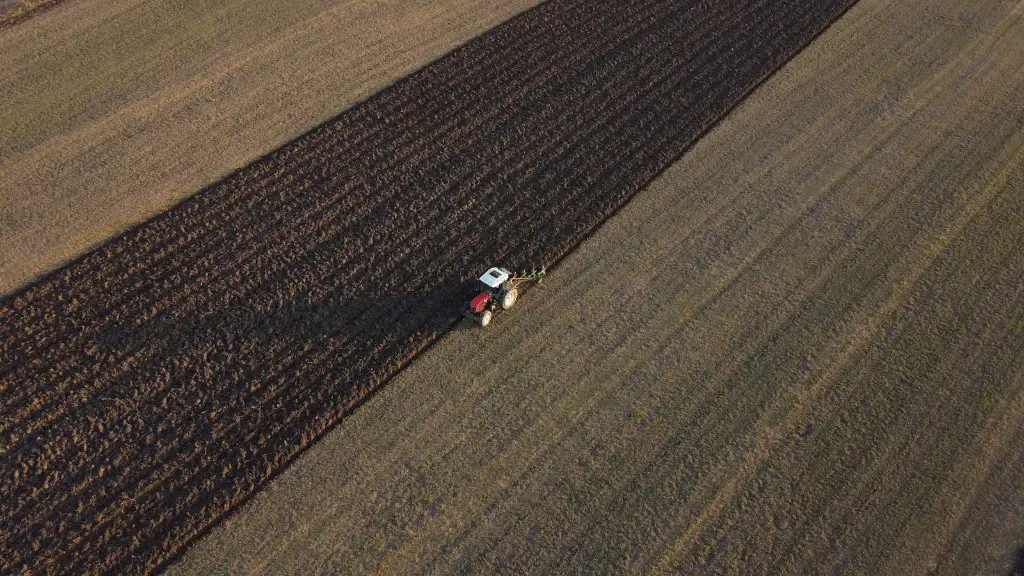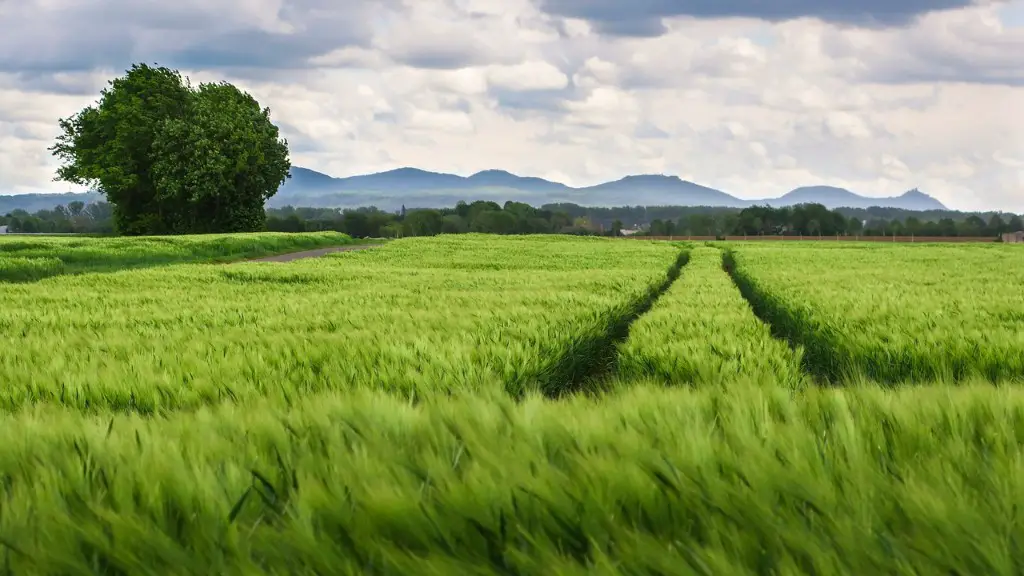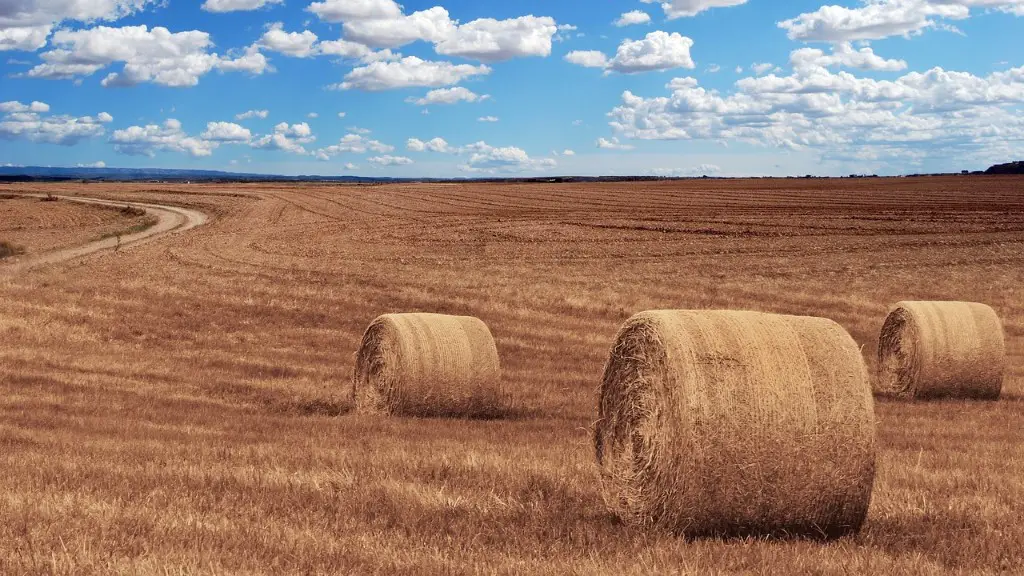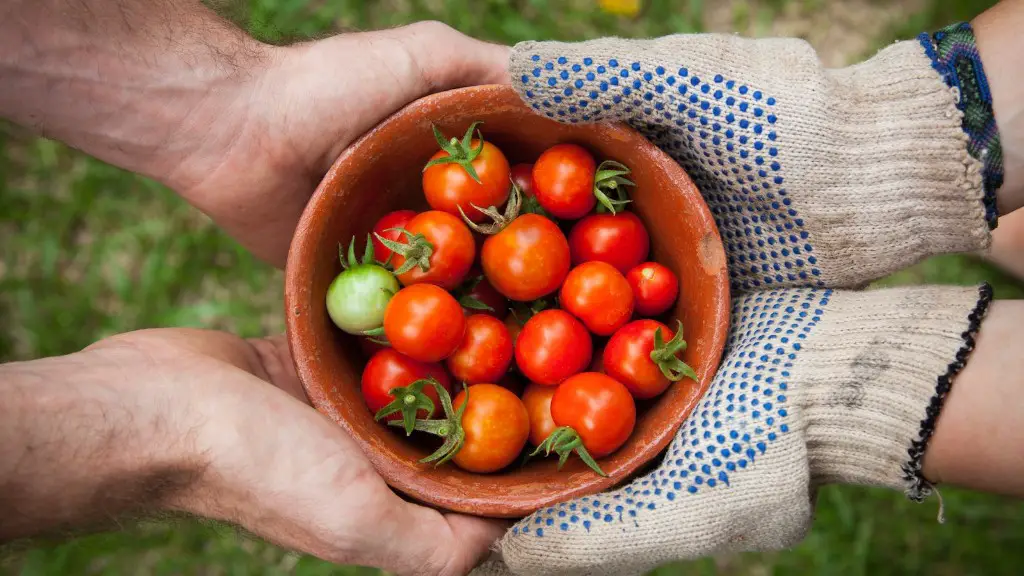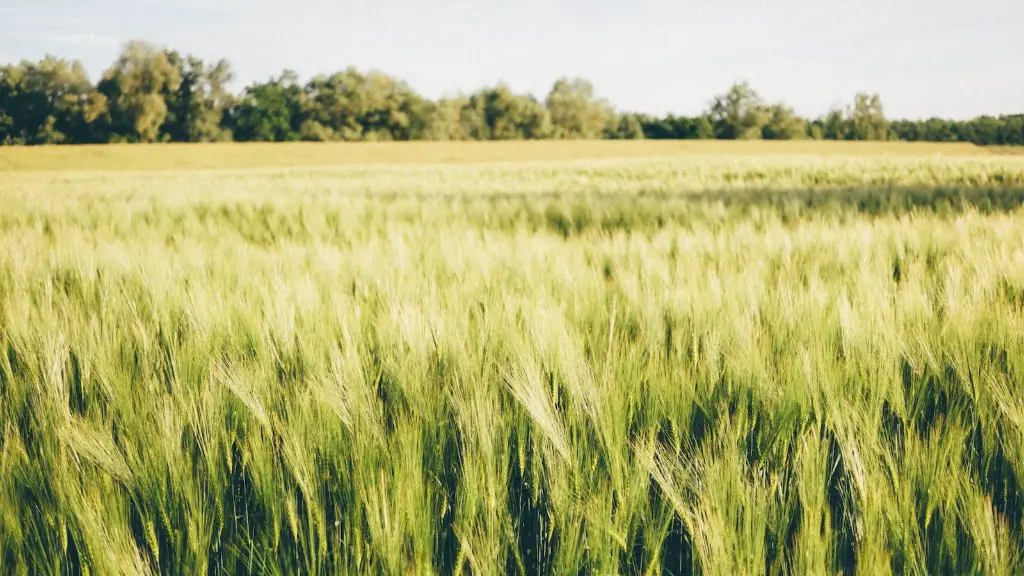Self sustaining agriculture is a type of agriculture where the farm produces enough food to meet the needs of the farmer and their family, without having to purchase any additional food from outside sources. This type of agriculture is typically found on small family farms, where the farmer is able to maintain a high level of self sufficiency.
Self sustaining agriculture is an agricultural system or farm that can produce enough food to meet the needs of the people on the farm without having to rely on importing food from outside the farm.
What are 3 types of sustainable agriculture?
There are a number of sustainable agriculture methods and farming practices that can be used in order to create a more sustainable and environmentally friendly agricultural system. These include permaculture, biodynamic farming, hydroponics and aquaponics, urban agriculture, and agroforestry and food forests.
Permaculture is a type of agriculture that focuses on creating a sustainable and self-sufficient system. It utilizes a variety of techniques such as crop rotation, companion planting, and using natural pest control methods.
Biodynamic farming is another type of sustainable agriculture that uses organic and sustainable methods. It focuses on creating a balance between the environment and the farm.
Hydroponics and aquaponics are two methods of growing plants without soil. These methods use water and nutrients to grow plants.
Urban agriculture is a type of agriculture that is practiced in urban areas. It focuses on growing food in an efficient and sustainable way in order to meet the needs of the urban population.
Agroforestry and food forests are two more sustainable agriculture methods. Agroforestry is a type of agriculture that combines trees and crops, while food forests are forests that are specifically designed to produce food.
Cover crops and perennials are important for protecting and building soil health. They prevent erosion, replenish soil nutrients, and keep weeds in check, reducing the need for fertilizers and herbicides.
What does self-sufficient mean in agriculture
Self-sufficiency is the ability to provide for oneself without assistance from others.
The term is often used in reference to food production, meaning the ability to grow enough food to feed oneself and one’s family. Self-sufficiency can also refer to other areas such as energy production or economic production.
Achieving self-sufficiency is often seen as a positive goal, as it can lead to increased independence and security. However, it is not always possible or desirable to be completely self-sufficient, and trade is often necessary to obtain essential resources.
If you want to be self-sufficient, you will need at least 5 acres of land. This will allow you to grow enough food for your family and have enough space for other activities. With quality land, adequate rainfall, and a long growing season, you can be self-sufficient on a smaller plot of land.
What are the disadvantages of sustainable farming?
Sustainable farming has a lot of disadvantages that make it difficult for farmers to implement and maintain. One of the biggest disadvantages is the limited land use. Because sustainable farming relies on techniques like crop rotation and using natural fertilizers, the amount of land that can be used is limited. This makes it difficult to produce enough food to meet the demand.
Another disadvantage of sustainable farming is that it is labor-intensive. Farmers have to put in a lot of effort to maintain their crops and soil. This can be difficult to sustain over the long term.
A third disadvantage of sustainable farming is that the shelf life of food grown using these techniques is shorter. This is because sustainable methods don’t use preservatives or other chemicals to extend the shelf life of food.
Despite these disadvantages, sustainable farming is still a viable option for many farmers. It is important to consider all of the factors before deciding if sustainable farming is right for you.
The 5 key principles of sustainability for food and agriculture are:
1. Increase productivity, employment and value addition in food systems
2. Protect and enhance natural resources
3. Improve livelihoods and foster inclusive economic growth
4. Enhance the resilience of people, communities and ecosystems
5. Adapt governance to new challenges.
What are the four types of sustainable agriculture?
Sustainable agriculture is an approach to agriculture that focuses on producing long-term environmental, social, and economic benefits.
There are many different elements that can contribute to making agriculture more sustainable. These can include things like permaculture (a design system that mimics the patterns and relationships found in natural ecosystems), agroforestry (the intentional integration of trees and shrubs into farming systems), mixed farming (the production of both crops and livestock), multiple cropping (growing more than one crop on the same piece of land in a single year), and crop rotation (a sequence of growing different crops on the same piece of land in order to improve soil health).
BASF is committed to making agriculture more sustainable through its four core pillars: climate smart farming, sustainable solutions, digital farming, and smart stewardship.
Climate smart farming includes practices that help farmers adapt to and mitigate the effects of climate change. Sustainable solutions encompass a range of products and services that help farmers increase efficiency and reduce impact on the environment. Digital farming uses data and technology to improve farm management and decision-making. Smart stewardship promotes responsible use of resources, including water, land, and energy.
BASF’s commitment to sustainability in agriculture demonstrates its dedication to the long-term success of farmers around the world.
Which forms of agriculture are the most sustainable
Sustainable farming practices are those that are environmentally friendly and help to conserve resources. These practices can help to improve the health of the soil, conserve water, and help to reduce pollution. sustainable farming practices can also help to improve the productivity of the land.
If you’re looking to be more self-sufficient, then growing your own food is a great way to start. Here are 10 essential crops that you should grow in your garden:
1. Potatoes – Potatoes are a must-grow crop for anyone, but especially someone trying to become more self-sufficient. They’re great for storing over winter and can be used in so many different dishes.
2. Winter Squash – I’ll be the first to admit, other than pumpkin pie, I’m not a huge fan of winter squash. But they’re an excellent source of vitamins and minerals, and can be stored for months.
3. Carrots – Carrots are another essential crop for anyone growing their own food. They’re easy to grow and can be stored for a long time. Plus, they’re a great source of Vitamin A.
4. Cabbage – Cabbage is another great crop for those looking to become more self-sufficient. It’s easy to grow and can be stored for months. Plus, it’s a great source of Vitamin C.
5. Onions – Onions are another essential crop for anyone growing their own food. They’re easy to grow and can be used in so many
Which is an example of self-sufficiency?
It’s always impressive when someone is able to take care of themselves without needing help from others. It shows that they are independent and capable of handling whatever comes their way. If you’re ever in a situation where you need to be self-sufficient, know that you have the strength to do it.
Self-sufficient people are those who are able to take care of themselves without needing help from others. They are independent and self-reliant. They are often able to do things that other people cannot do.
How do I start a self sustaining farm
“Self sufficiency farming” is a term that is used to describe a variety of different ways to farm without the use of outside resources. It generally means that the farm is able to produce everything it needs to sustain itself and its animals. This can be done through a variety of methods, such as using organic methods, using alternative energy sources, or using local resources.
Even though 5 acres may not seem like a lot of land, there are ways to maximize the space and make a living off a successful farm. The key is to find the right plot of land, plan carefully, and put in the hard work. With the right land and the right plan, a farm can be a great source of income.
What is the most profitable plant?
If you’re looking to make a profit through crop cultivation, here are thirteen of the most profitable crops to grow:
1. Mushrooms
2. Microgreens
3. Ginseng
4. Lavender
5. Saffron
6. Goji Berries
7. Wasabi
8. Bonsai Plants
each of these crops can be extremely profitable when grown and sold correctly. Do your research on the best way to grow and market each crop, and you’ll be well on your way to making a healthy profit.
There are a few key challenges that are facing the agricultural industry today. The first is the growing scarcity of natural resources. With the world’s population increasing, there is more demand than ever for food, water, and other resources. This is causing those resources to be used up faster than they can be replenished, leading to conflicts and instability in many parts of the world.
The second challenge is the degradation of natural resources. Soil degradation, for example, is a major problem in many agricultural regions. This is caused by a number of factors, including poor farming practices, climate change, and urbanization. As the population continues to grow, the pressure on these resources will only increase, exacerbating the problem.
The third challenge is the increasing demand for food, feed, fibre, and other goods and services from agriculture. This is being driven by population growth, as well as by the growing middle class in developing countries, who have more disposable income and are therefore demanding more products. This is putting pressure on farmers to produce more, often at the expense of the environment.
All of these challenges are interconnected, and they are all having a negative impact on the agricultural industry. If the industry is to thrive in the future, it will need to
What is the argument against sustainable agriculture
There are a few reasons why sustainable agriculture cannot “feed the world.” First, sustainable agriculture relies on local resources, while the world’s population is increasingly mobile. Second, sustainable agriculture is often more expensive than intensive agriculture, so there is less money to invest in research and development. Third, sustainable agriculture is often less productive than intensive agriculture, so it can only provide food for a fraction of the world’s population.
There are a few key reasons why organic farms require more space to grow the same amount of produce as synthetic-fertilizer farms.
First, organic farms can’t use synthetic fertilizers, which means they have to rely on other means of increasing soil fertility. This often leads to the need for more land because crops may not be as densely packed as on synthetic-fertilizer farms.
Second, organic farmers often use crop rotation to manage soil fertility and pests. This means that they need more land to accommodate different crops in different years.
Third, organic farmers often use cover crops and green manures to replenish soil nutrients. These practices also require more land area.
Fourth, livestock play an important role in organic systems, providing manure for fertilizer. This means that organic farms typically need pasture land for grazing animals.
All of these factors contribute to the need for more land on organic farms. As a result, deforestation is nearly inevitable as organic farms expand to meet the demand for their products.
Conclusion
Self sustaining agriculture is a type of agricultural production where the farm produces enough food to meet the needs of the farmer and their family, with little to no reliance on purchased inputs.
Self sustaining agriculture is a type of farming in which the farmer is able to produce enough food to meet the needs of their family without having to purchase any additional resources. This type of farming is typically done on a small scale and relies heavily on the use of natural resources such as sunlight, water, and soil.
